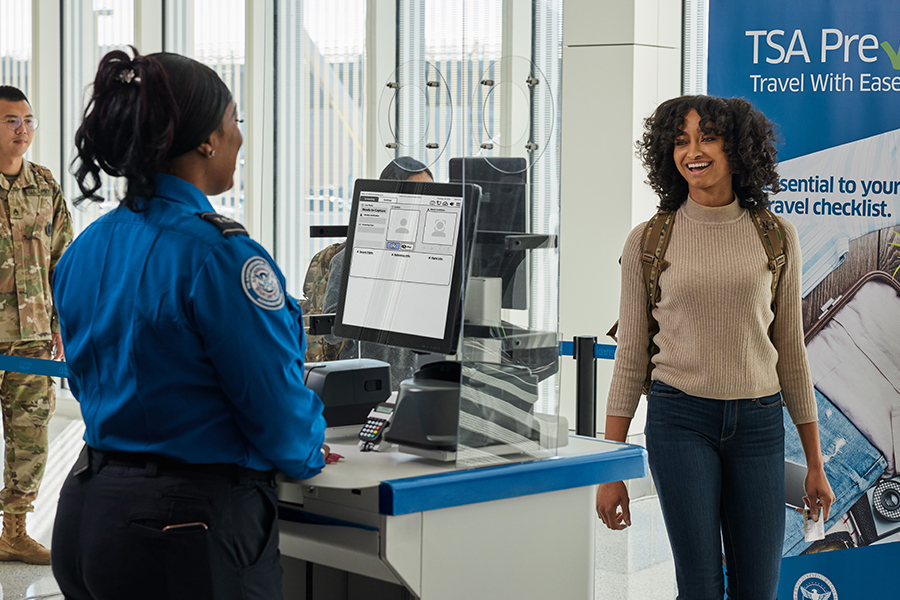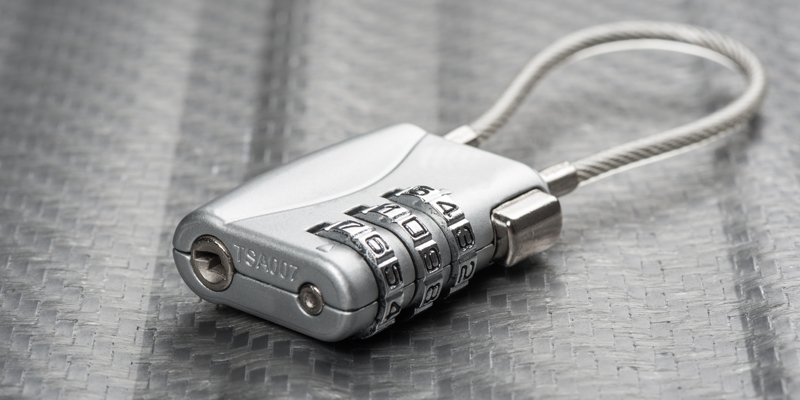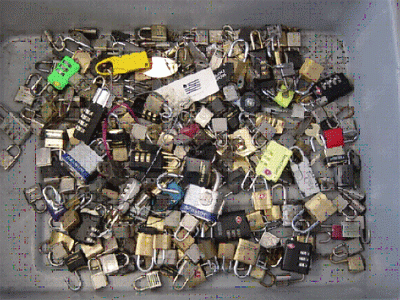Our AskTSA team is here and looks forward to answering your questions 365 days a year; live assistance is available from 8 am – 6 pm (ET).
- X: @AskTSA
- Facebook Messenger: www.fb.com/AskTSA
- Apple Business Chat: AskTSA
- Text Message: Text "Travel" to AskTSA (275-872)
One of the more popular questions we get from travelers is: “Can I travel with my medication?” The answer is yes, with some qualifiers. Here are a few tips that you might find helpful.

It is not necessary to present your medication to, or notify an officer about any medication you are traveling with unless it is in liquid form (See next bullet).
- Medication in liquid form is allowed in carry-on bags in excess of 3.4 ounces in reasonable quantities for the flight. It is not necessary to place medically required liquids in a zip-top bag. However, you must tell the officer that you have medically necessary liquids at the start of the screening checkpoint process. Medically required liquids will be subject to additional screening that could include being asked to open the container.
- You can bring your medication in pill or solid form in unlimited amounts as long as it is screened.
- You can travel with your medication in both carry-on and checked baggage. It’s highly recommended you place these items in your carry-on in the event that you need immediate access.
- TSA does not require passengers to have medications in prescription bottles, but states have individual laws regarding the labeling of prescription medication with which passengers need to comply.
- Medication is usually screened by X-ray; however, if a passenger does not want a medication X-rayed, he or she may ask for a visual inspection instead. This request must be made before any items are sent through the X-ray tunnel.
- Nitroglycerin tablets and spray (used to treat episodes of angina in people who have coronary artery disease) are permitted and have never been prohibited.
We all know by now that a turkey sandwich is not a liquid, but it can still be confusing when you’re figuring out how to pack your liquids. Watch this video and it will all be crystal clear.
It can be stressful traveling with baby gear any time of year. Check out this video for tips on navigating through the security screening process with these items. And don’t forget, if you need assistance – just ask – we’re happy to help!
Automated Screening Lanes are a state-of-the-art checkpoint technology that enhances security efficiency while decreasing the amount of time travelers spend during the security screening process. These lanes are currently in airports in New York, Los Angeles, Las Vegas, Dallas, Chicago, Minneapolis, Miami, Houston, Newark, Seattle and Atlanta.
November 14th is World Diabetes Day so we thought it was the perfect opportunity to talk about traveling with diabetes. We know that traveling with medical supplies can be a nerve-wracking experience, especially when your medication includes needles and other sensitive equipment. So here are some tips to help make your trip as smooth as possible.
Notify the Officers
When you arrive at the checkpoint, let our officers know about your medical device and any other equipment prior to screening. If you have an insulin pump, glucose monitor or other medical device attached to your body, inform the officers where it is located before the screening process begins. Although not required, you can provide them with a TSA notification card prior to screening to discreetly describe the medical condition.
If you have questions or concerns at any time during the screening process, please ask to speak to a supervisor.
Screening Process
Passengers in standard lanes may be screened by advanced imaging technology, metal detector or a pat-down. If the standard lane does not have advanced imaging technology, or if you are eligible for expedited screening through TSA PreCheck®, you may be screened by a walk-through metal detector. If you do not wish to go through screening by technology, inform the TSA officer and they will conduct a pat-down. Pat-downs are conducted by a TSA officer of the same sex, and you may request private screening at any time.
You will not be required to remove any medical devices attached to your body.
Medical Supplies
If you are traveling with medical equipment or supplies, they will need to undergo separate screening. The TSA officer will check the supplies and conduct any necessary testing. If your medical condition requires it, you are allowed to travel with a juice box or other liquid over 3.4oz., but be prepared for the liquid to receive additional screening.
In the event that your insulin pump or glucose monitor is attached to your body, the device is subject to additional screening, including visual inspection. You may be required to conduct a self pat-down of the actual device, followed by a test of your hands for any trace of explosives.
Still have questions? Visit our website for additional information.
TSA Cares
If you have any additional questions or need assistance at the checkpoint, reach out to TSA Cares at 855-787-2227. Simply call 72 hours prior to your trip or visit our TSA Cares website. Knowing more about the process may help to relieve any stress and anxiety!

The special guide for service members and their families includes travel tips, such as how to prepare, pack and declare a firearm, checkpoint dos and don’ts, and an inside look at some of TSA’s programs and employees, with a special military emphasis.
View Guide
Who doesn’t want to get through security faster? TSA PreCheck® allows you to do just that. It’s quick and easy security screening for travelers we know more about – and have earned the esteemed title of “Trusted Traveler.” Applying is easy and once you’re a member- you’ll never want to go back. If you want to know more about all of the DHS trusted traveler programs such as Global Entry and Nexus, pls visit: dhs.gov/tt.

While it’s understandable that travelers want to lock their baggage to protect their personal belongings, it’s also important to understand that TSA officers must be able to inspect baggage and contents when the need arises. That’s where TSA recognized locks come in.
In order to ensure the safe transportation of travelers, TSA screens all checked and carry-on baggage before it is permitted to be brought onboard commercial aircraft. Technology generally enables us to electronically screen bags without opening them, but there are times when we need to physically inspect a piece of luggage. TSA has worked with several companies to develop locks that can be opened by security officers using universal "master" keys so that the locks may not have to be cut. These locks are available at most airports and many travel stores nationwide. The packaging on the locks indicates whether they can be opened by TSA.
In some cases, TSA officers will have to open your baggage as part of the screening process. If your bag is unlocked, then our officer will simply open and screen the baggage if any item alarms. However, if you decide to lock your checked baggage and TSA cannot open it through other means, then the locks may have to be cut. For soft-sided baggage, this process will not damage your zippers or zipper pulls. TSA is careful to not damage any personal belongings, however, we are not liable for damage caused to locked bags that must be opened for security purposes. Again, that is where the value of the recognized locks come in. Please note that if an officer does need to open your bag, a “Notice of Baggage Inspection” will be place in your bag.
While our officers may have to cut locks from time to time, it’s not the only reason your lock could be missing or damaged. Locks, along with your baggage, can also be damaged by airport conveyor belt systems as shown below:

The image below is a collection of 244 locks pulled from under an airport baggage handling conveyor belt where the two belts come together. These were collected over a period of one month at a New York Airport.

I hope this tip will help you better protect your property and help us keep you safe and secure when flying.

